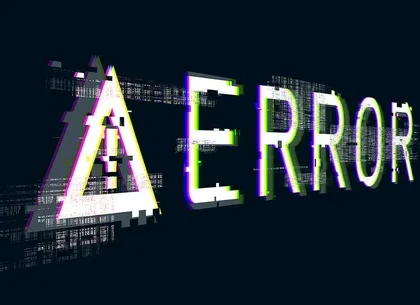Introduction
In today’s hyper-connected world, the need for robust cybersecurity measures is more critical than ever. As our digital footprint expands, so do the threats that target our online assets. Artificial Intelligence (AI) has emerged as a game-changer in the realm of cybersecurity, particularly in threat detection. This article explores the evolution of cyber threats, the limitations of traditional approaches, and the pivotal role AI plays in enhancing our digital defenses.
Evolution of Cyber Threats
The history of cybersecurity is marked by a constant cat-and-mouse game between hackers and defenders. Cyber threats have evolved from simple viruses to complex and targeted attacks, including ransomware and advanced persistent threats. As technology advances, so does the sophistication of cyber threats, necessitating innovative solutions for effective detection and mitigation.
Traditional Approaches to Cybersecurity
Traditional cybersecurity measures, while effective to a certain extent, struggle to keep pace with the rapidly changing threat landscape. Signature-based detection methods and rule-based systems have limitations in identifying novel and advanced threats, leading to a heightened risk of security breaches.
The Rise of AI in Cybersecurity
The integration of AI in cybersecurity has proven to be a transformative development. Machine learning algorithms, a subset of AI, enable systems to learn and adapt from data, enhancing their ability to detect and respond to previously unseen threats. The proactive nature of AI is crucial in addressing the burstiness of modern cyber threats.
Advantages of AI in Threat Detection
One of the significant advantages of AI in cybersecurity is its real-time monitoring and analysis capabilities. AI-powered systems can analyze vast amounts of data in real-time, identifying anomalies and potential threats with speed and accuracy beyond human capability. The adaptive nature of AI ensures continuous learning and adjustment to new attack vectors.
Challenges in Implementing AI for Cybersecurity
While AI presents promising solutions, challenges exist. Ethical concerns, biases in AI algorithms, and the integration of AI into existing cybersecurity frameworks require careful consideration. Striking a balance between innovation and security is crucial to the successful implementation of AI in cybersecurity.
Case Studies
Several organizations have successfully implemented AI in their cybersecurity strategies, resulting in a significant reduction in security incidents. From financial institutions to government agencies, AI has demonstrated its effectiveness in identifying and neutralizing threats before they can cause harm.
Future Trends in AI and Cybersecurity
The future holds exciting possibilities for the collaboration between AI and cybersecurity. Predictive analytics, leveraging AI to anticipate and prevent threats before they materialize, is on the horizon. Collaborative efforts between industry stakeholders and cybersecurity experts will drive the evolution of AI technologies in safeguarding digital assets.
Cybersecurity Workforce and AI Collaboration
The synergy between human expertise and AI capabilities is crucial for effective cybersecurity. As AI takes on routine tasks, cybersecurity professionals can focus on strategic decision-making and addressing complex threats. Skill development programs are essential to equip the workforce with the knowledge required to collaborate seamlessly with AI technologies.
AI Tools for Threat Detection
Several AI-based cybersecurity tools have gained prominence in the industry. From network anomaly detection to behavior analysis, these tools enhance traditional cybersecurity measures, providing a layered defense against diverse threats.
Addressing Concerns: Privacy and AI
The deployment of AI in cybersecurity raises concerns about privacy. Striking a balance between robust security measures and respecting individual privacy is paramount. Regulations and frameworks must be in place to ensure responsible and ethical use of AI in the context of cybersecurity.
Cybersecurity Education and Awareness
Educating users about cyber threats is a crucial aspect of cybersecurity. Creating a culture of awareness helps individuals recognize potential threats, reducing the risk of falling victim to cyberattacks. Cybersecurity education should be an integral part of digital literacy initiatives.
Industry Perspectives on AI in Cybersecurity
Industry leaders and cybersecurity experts share insights into the evolving landscape of AI in cybersecurity. Collaborative efforts and information sharing are essential for staying ahead of cyber threats. The collective intelligence of the cybersecurity community contributes to the continuous improvement of AI technologies.
Measuring the Success of AI in Cybersecurity
Key performance indicators (KPIs) play a vital role in evaluating the success of AI in cybersecurity. Metrics such as detection accuracy, response time, and the reduction of false positives provide valuable insights into the effectiveness of AI-powered security systems. Continuous monitoring and adaptation are essential for staying ahead of evolving threats.
Conclusion
In conclusion, the role of AI in cybersecurity, specifically in threat detection, cannot be overstated. As cyber threats continue to evolve, the integration of AI provides a proactive and adaptive defense mechanism. The collaborative efforts between AI and human expertise, coupled with ongoing advancements in technology, are key to securing our digital future.
Frequently Asked Questions (FAQs)
- Is AI the ultimate solution for cybersecurity?
- While AI significantly enhances cybersecurity, it’s not a silver bullet. A holistic approach combining AI with human expertise is essential for robust cybersecurity.
- How does AI address the challenges of evolving cyber threats?
- AI’s adaptive capabilities and real-time analysis enable it to identify and respond to novel and sophisticated cyber threats effectively.
- Are there concerns about bias in AI algorithms for cybersecurity?
- Yes, biases in AI algorithms can pose ethical concerns. It’s crucial to address and mitigate biases to ensure fair and effective cybersecurity practices.
- What role do regulations play in the responsible use of AI in cybersecurity?
- Regulations and frameworks are essential to guide the responsible and ethical deployment of AI in cybersecurity, balancing security needs with individual privacy.
- How can individuals contribute to cybersecurity efforts?
- Individuals can contribute by staying informed about cyber threats, practicing safe online habits, and participating in cybersecurity education programs.




